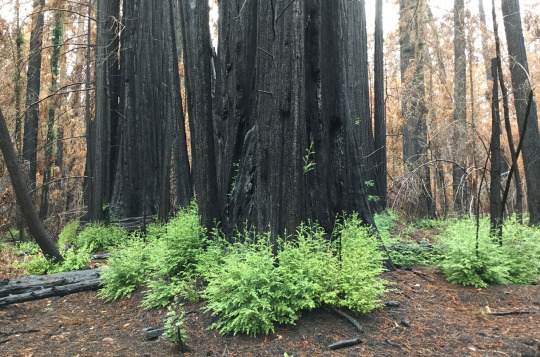#new heat
Text

**NEW HEAT**
Airmaxx - “BELIEVE IT OR NOT” (official music video) @nike2times
#airmaxx#believe it or not#official music video#new music video#discover artists#discover new artists#discover music#new heat#beyourownboss records#byob#music#hip hop#rap#now watching#stream now#out now#artist on tumblr#underground artist#gifs#gif#staff picks#blackout#black out#fyp#for you page#hip hop blog#reblog
24 notes
·
View notes
Text
++intro to my new album⚠️🆕❤️🔥
#I love autotune Airmaxx#intro#introduction#me#airmaxx#music#new album#new release#soundcloud#now playing#new heat#new music#alternative rnb#rnb#autotune#airmax#staff picks#trending#fyp#press play#pop music#artists on tumblr
8 notes
·
View notes
Text
+++i dropped on soundcloud because i think apple music and spotify delayed my release😒 anyways, enjoy<3
#me#airmaxx#music#soundcloud#new sounds#certified lover boy#intro#i love autotune airmaxx#introduction#now listening#now playing#auto tune#airmax#new heat#staff picks#fyp#reblog#press play#new music#beyourownboss records#byob#new release#brand new
8 notes
·
View notes
Text

South Carolina hip hop artists Airmaxx & Gucci LO drop off new visuals for their new single 📼“AllStar”📼 (click the link to watch now)
#new rap music#new music 2022#airmaxx#featuring#Gucci LO#allstar#official music video#staff picks#new heat#new single#now watching#streaming now#music#southern hip hop#south carolina#xxl#visuals#cinemetography#film#gif#rap#hip hop#watch now#artists on tumblr
8 notes
·
View notes
Text
"With “green corridors” that mimic the natural forest, the Colombian city is driving down temperatures — and could become five degrees cooler over the next few decades.
In the face of a rapidly heating planet, the City of Eternal Spring — nicknamed so thanks to its year-round temperate climate — has found a way to keep its cool.
Previously, Medellín had undergone years of rapid urban expansion, which led to a severe urban heat island effect — raising temperatures in the city to significantly higher than in the surrounding suburban and rural areas. Roads and other concrete infrastructure absorb and maintain the sun’s heat for much longer than green infrastructure.
“Medellín grew at the expense of green spaces and vegetation,” says Pilar Vargas, a forest engineer working for City Hall. “We built and built and built. There wasn’t a lot of thought about the impact on the climate. It became obvious that had to change.”
Efforts began in 2016 under Medellín’s then mayor, Federico Gutiérrez (who, after completing one term in 2019, was re-elected at the end of 2023). The city launched a new approach to its urban development — one that focused on people and plants.
The $16.3 million initiative led to the creation of 30 Green Corridors along the city’s roads and waterways, improving or producing more than 70 hectares of green space, which includes 20 kilometers of shaded routes with cycle lanes and pedestrian paths.
These plant and tree-filled spaces — which connect all sorts of green areas such as the curb strips, squares, parks, vertical gardens, sidewalks, and even some of the seven hills that surround the city — produce fresh, cooling air in the face of urban heat. The corridors are also designed to mimic a natural forest with levels of low, medium and high plants, including native and tropical plants, bamboo grasses and palm trees.
Heat-trapping infrastructure like metro stations and bridges has also been greened as part of the project and government buildings have been adorned with green roofs and vertical gardens to beat the heat. The first of those was installed at Medellín’s City Hall, where nearly 100,000 plants and 12 species span the 1,810 square meter surface.
“It’s like urban acupuncture,” says Paula Zapata, advisor for Medellín at C40 Cities, a global network of about 100 of the world’s leading mayors. “The city is making these small interventions that together act to make a big impact.”
At the launch of the project, 120,000 individual plants and 12,500 trees were added to roads and parks across the city. By 2021, the figure had reached 2.5 million plants and 880,000 trees. Each has been carefully chosen to maximize their impact.
“The technical team thought a lot about the species used. They selected endemic ones that have a functional use,” explains Zapata.
The 72 species of plants and trees selected provide food for wildlife, help biodiversity to spread and fight air pollution. A study, for example, identified Mangifera indica as the best among six plant species found in Medellín at absorbing PM2.5 pollution — particulate matter that can cause asthma, bronchitis and heart disease — and surviving in polluted areas due to its “biochemical and biological mechanisms.”
And the urban planting continues to this day.
The groundwork is carried out by 150 citizen-gardeners like Pineda, who come from disadvantaged and minority backgrounds, with the support of 15 specialized forest engineers. Pineda is now the leader of a team of seven other gardeners who attend to corridors all across the city, shifting depending on the current priorities...
“I’m completely in favor of the corridors,” says [Victoria Perez, another citizen-gardener], who grew up in a poor suburb in the city of 2.5 million people. “It really improves the quality of life here.”
Wilmar Jesus, a 48-year-old Afro-Colombian farmer on his first day of the job, is pleased about the project’s possibilities for his own future. “I want to learn more and become better,” he says. “This gives me the opportunity to advance myself.”
The project’s wider impacts are like a breath of fresh air. Medellín’s temperatures fell by 2°C in the first three years of the program, and officials expect a further decrease of 4 to 5C over the next few decades, even taking into account climate change. In turn, City Hall says this will minimize the need for energy-intensive air conditioning...
In addition, the project has had a significant impact on air pollution. Between 2016 and 2019, the level of PM2.5 fell significantly, and in turn the city’s morbidity rate from acute respiratory infections decreased from 159.8 to 95.3 per 1,000 people [Note: That means the city's rate of people getting sick with lung/throat/respiratory infections.]
There’s also been a 34.6 percent rise in cycling in the city, likely due to the new bike paths built for the project, and biodiversity studies show that wildlife is coming back — one sample of five Green Corridors identified 30 different species of butterfly.
Other cities are already taking note. Bogotá and Barranquilla have adopted similar plans, among other Colombian cities, and last year São Paulo, Brazil, the largest city in South America, began expanding its corridors after launching them in 2022.
“For sure, Green Corridors could work in many other places,” says Zapata."
-via Reasons to Be Cheerful, March 4, 2024
#colombia#brazil#urban#urban landscape#urban planning#cities#civil engineering#green architecture#green spaces#urban heat#urban heat island effect#weather#meteorology#global warming#climate change#climate hope#climate optimism#climate emergency#climate action#environment#environmental news#city architecture#bicycling#native plants#biodiversity#good news#hope#solarpunk#ecopunk#hopepunk
12K notes
·
View notes
Text
Before you say no duh, remember that we need studies like this to quantify things for planning, government policy, and court cases, and also to help convince people who's minds aren't already made up.
I know I struggle to breath in heat like this, and hypoxia kills, especially when cars are involved.
5K notes
·
View notes
Text

Lan Wangji Goes To Lotus Pier AU: Part 4: Deranged Bedfellows
(Part 1, Part 2, Part 3, Part 4.5)
#poorly drawn mdzs#mdzs#mdzs au#lan wangji#nie huaisang#Yungmeng Jiang training arc AU#This is the *first* part of what was supposed to be a much longer comic (LWJ's morning routine in full).#I'll finish the remaining part as a reblog to this post! I just think this is the funnier chunk.#Lan Wangji absolutely is the kind of person who has a perfect internal alarm clock for when it is time to get up.#He already has a dedicated sleep schedule. He is accurate within 10 seconds of 5am every day.#I think the Jiang disciples are most likely used to waking up around 6:00-7:00am#But the allure of having a guaranteed time keeper getting you up in the morning is worth the earlier hour.#I imagine they started outside lwj's door and slowly moved closer as the weeks went on.#Now LWJ has to cope with being way too warm in the night from all the extra body heat.#LWJ is not a fan of this but they scamper off immediately after he wakes up and they at least show initiative to follow routine.#NHS joins in only because he is a chronically heavy sleeper and needs this level of intervention to get up early.#His boldness would be a death sentence in the cloud recesses but here? Whole new game.#Yungmeng Jiang isn't a lawless land. It's just a land with different laws.#And one of those laws is to forcefully domesticate the catboy coded Lan boy through any means necessary.#Completely different tangent: I drew the thumbnail for this before I did comic 134. I then realized they had the same visual gag.#So I had to space this one out so it didn't seem like I repeated the waking up joke. That's my secret and all of you have to keep it.#And in my land the law is that snitches get itches (telepathically transfers hives onto your body)
980 notes
·
View notes
Text
#good news#nature#science#environmentalism#environment#animals#climate change#fossil fuels#heat pumps
2K notes
·
View notes
Text
#nowstreaming#now trending#stream now#nowplaying#now available#now playing#spotify artist#airmaxx#spotify#new heat#reblog#discover artists#discover new artists#staff picks#discover new music#music#rap#hiphop
1 note
·
View note
Text
Airmaxx - “Show Meh” (producer. TJ1000)
#airmaxx#show meh#show#meh#new song#nowplaying#now playing#listen now#now listening#discover artists#discover new artists#discover music#Spotify#spotify playlist#new heat#i love autotune airmaxx#autotune Airmaxx#airmax#staff picks#music#trending#slime
7 notes
·
View notes
Text
🆕🔥🐾
#airmaxx#new#music#hip hop#rap#soundcloud#me#reblog#new heat#brand new#beyourownboss#byob#on replay#on repeat#now playing#staff picks#nowplaying#evil empire#evil empire mixtapes#strictly 4 my doggs#new single#snl#saturday night live
9 notes
·
View notes
Text
Subscribe Now🆕🎬🔜⤵️
#me#airmaxx#music#hip hop#reblog#new music video#otw#coming soon#new heat#download#summertime slime#mixtape#download now#apple music#Spotify#rap#beyourownboss records#byob#believe it or not#sneak preview#sneak peek#sneak peak#tik tok#trending#staff picks#my uploads#fyp#foryoupage
9 notes
·
View notes
Text
produced by Pi’erre Bourne🏁🔊
#airmaxx#new music 2022#new single#prod by#pi’erre bourne#produced by#yo pi’erre#yopierre#world premiere#staff picks#tumblr staff#spotify artist#spotify ads#spotify playlist#spotify#new heat#new rap music#streaming now#now streaming#now playing#nowplaying
7 notes
·
View notes
Text
Ancient redwoods recover from fire by sprouting 1000-year-old buds

Article | Paywall free
When lightning ignited fires around California’s Big Basin Redwoods State Park north of Santa Cruz in August 2020, the blaze spread quickly. Redwoods naturally resist burning, but this time flames shot through the canopies of 100-meter-tall trees, incinerating the needles. “It was shocking,” says Drew Peltier, a tree ecophysiologist at Northern Arizona University. “It really seemed like most of the trees were going to die.”
Yet many of them lived. In a paper published yesterday in Nature Plants, Peltier and his colleagues help explain why: The charred survivors, despite being defoliated [aka losing all their needles], mobilized long-held energy reserves—sugars that had been made from sunlight decades earlier—and poured them into buds that had been lying dormant under the bark for centuries.
“This is one of those papers that challenges our previous knowledge on tree growth,” says Adrian Rocha, an ecosystem ecologist at the University of Notre Dame. “It is amazing to learn that carbon taken up decades ago can be used to sustain its growth into the future.” The findings suggest redwoods have the tools to cope with catastrophic fires driven by climate change, Rocha says. Still, it’s unclear whether the trees could withstand the regular infernos that might occur under a warmer climate regime.
Mild fires strike coastal redwood forests about every decade. The giant trees resist burning thanks to the bark, up to about 30 centimeters thick at the base, which contains tannic acids that retard flames. Their branches and needles are normally beyond the reach of flames that consume vegetation on the ground. But the fire in 2020 was so intense that even the uppermost branches of many trees burned and their ability to photosynthesize went up in smoke along with their pine needles.
Trees photosynthesize to create sugars and other carbohydrates, which provide the energy they need to grow and repair tissue. Trees do store some of this energy, which they can call on during a drought or after a fire. Still, scientists weren’t sure these reserves would prove enough for the burned trees of Big Basin.
Visiting the forest a few months after the fire, Peltier and his colleagues found fresh growth emerging from blackened trunks. They knew that shorter lived trees can store sugars for several years. Because redwoods can live for more than 2000 years, the researchers wondered whether the trees were drawing on much older energy reserves to grow the sprouts.
Average age is only part of the story. The mix of carbohydrates also contained some carbon that was much older. The way trees store their sugar is like refueling a car, Peltier says. Most of the gasoline was added recently, but the tank never runs completely dry and so a few molecules from the very first fill-up remain. Based on the age and mass of the trees and their normal rate of photosynthesis, Peltier calculated that the redwoods were calling on carbohydrates photosynthesized nearly 6 decades ago—several hundred kilograms’ worth—to help the sprouts grow. “They allow these trees to be really fire-resilient because they have this big pool of old reserves to draw on,” Peltier says.
It's not just the energy reserves that are old. The sprouts were emerging from buds that began forming centuries ago. Redwoods and other tree species create budlike tissue that remains under the bark. Scientists can trace the paths of these buds, like a worm burrowing outward. In samples taken from a large redwood that had fallen after the fire, Peltier and colleagues found that many of the buds, some of which had sprouted, extended back as much as 1000 years. “That was really surprising for me,” Peltier says. “As far as I know, these are the oldest ones that have been documented.”
... “The fact that the reserves used are so old indicates that they took a long time to build up,” says Susan Trumbore, a radiocarbon expert at the Max Planck Institute for Biogeochemistry. “Redwoods are majestic organisms. One cannot help rooting for those resprouts to keep them alive in decades to come.”
-via Science, December 1, 2023
#redwoods#california#wildfire#climate change#extreme heat#natural disasters#botany#plant biology#photosynthesis#santa cruz#hopepunk#sustainability#climate hope#united states#good news#hope
11K notes
·
View notes
Text
sure it was a perfect storm of a pressure cooker but i promise destiel was about destiel
#like 2020 was all building towards something. the isolation the pandemic the general uncertainty of day to day life#toss in the heated election and counting process. sure it *couldve* been anything else. but it *wasnt*.#it was destiel. that night there were even other rumours circulating about other shows. another show even had a huge reveal!#but the most widespread and known was destiel because of course it was! because thats what everyone was losing their mind over!#look at the statistics chart of a history of destiel interest over time! i promise the destiel interest is about destiel!#were people all equally invested? no! were some people memeing? yes! but by and large nov 5th became a juggernaut bc of destiel#as someone who literally was refreshing for election news and developed mania from seeing destiel go canon. it was about destiel#sure the intersection of destiel and election results was fun. but i posted way more destiel than election stuff. cause it was about destie#anyway. idk why im on a soapbox#char speaks#destielputinelection#destiel
1K notes
·
View notes